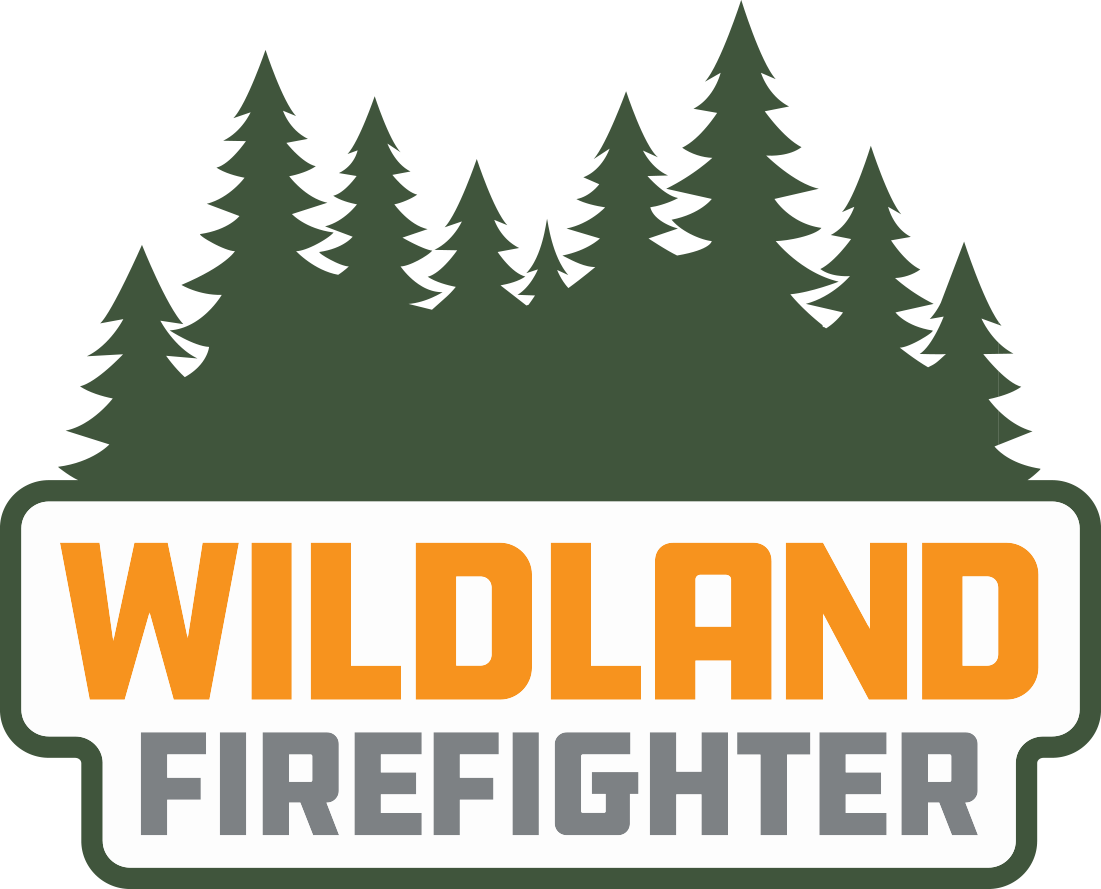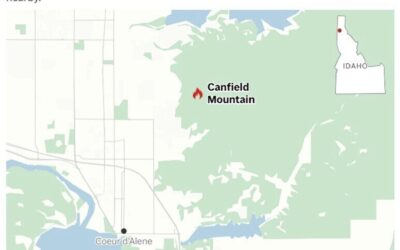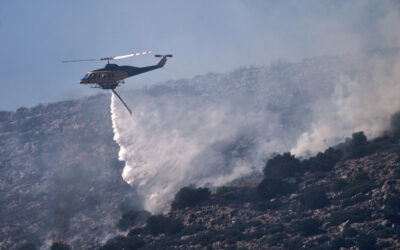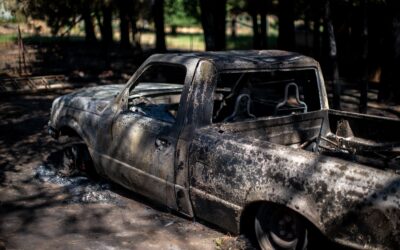By Mark Brunton
Whether you are beginning your career in the fire service or diversifying your fire service training and education, a roadmap on how to achieve success in becoming a wildland firefighter exists. Although traditionally, wildland fires have been a West Coast or southeastern problem in the United States, we are seeing an increase in wildland fires. In addition to changes in climate, increased fuels density, and wildland urban interface growth, fire agencies are taking on increased responsibility or inclusion into this realm. Many agencies have been dealing with wildland fires for decades, while others are just getting started. These affect federal, state, and local agencies.
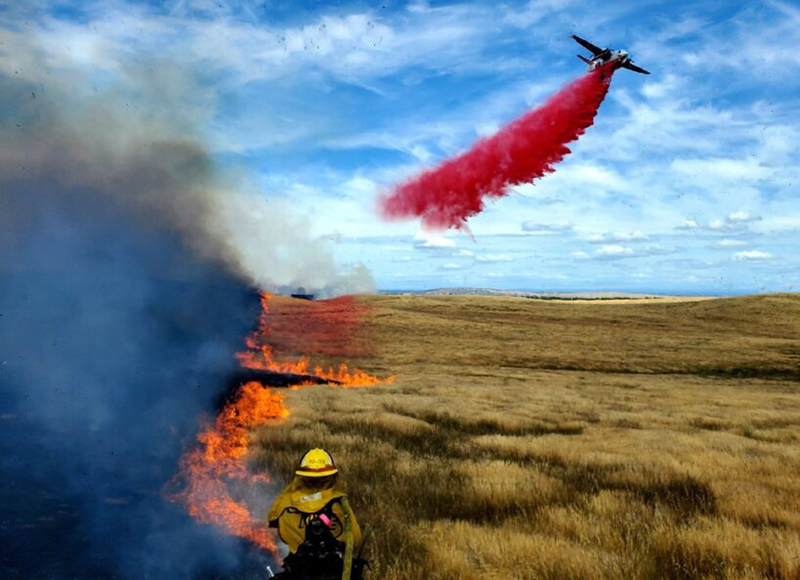
1. A firefighter performs a mobile attack with a tanker drop. (Photo by Captain Jenna Peckham.)
In California, in particular, agencies from all-volunteer fire departments to large all-career local fire, state, and federal agencies work together through written agreements to provide mutual aid in the suppression of wildland fires. These agreements have been in place since the 1970s and have proved effective. A variety of agreements exist throughout the United States in the form of compacts, memorandums of understanding, and joint power authorities, to name a few, to provide a wildland response capability. To provide this service, standardized and established training has been developed over the years to prepare firefighters of all agencies. We will discuss some of this preparation that is used on the local and national levels.
Many agencies use the Red Card system as established by the National Wildfire Coordinating Group (NWCG). It is officially known as the Incident Qualifications Card. This system is nationally recognized and not only establishes entry level minimum training but outlines training requirements to more advanced qualifications in wildland firefighting. Other agencies have created their own training and policies regarding basic to advanced wildland firefighter training. It is best to research what the agency you are intending to work for requires.
The next step is to find out how you can obtain this training. If you are not currently working for a fire agency that will provide this training, how do you get it? Some agencies will provide the necessary training as you apply and go through their selection process. However, you may want to get ahead and make yourself more marketable by taking the training on your own. Many community colleges and private fire training companies offer the necessary basic courses to get you started.
Beyond the formalized classroom training, there is a significant element of physical training and nutrition for wildland firefighting. The environment that you will work in is extremely difficult and unforgiving. Factors such as the environment, topography, and long duration of the incident all require a high level of physical fitness. Unlike structural firefighting, for the most part, wildland firefighting can last from many hours to weeks in duration. It is more of a marathon than a sprint. Federal forest agencies as well as CAL FIRE have done extensive studies in partnership with universities, physicians, and experts in the field of fitness and nutrition to determine the needs of the wildland firefighter.
Preparation for this kind of firefighting requires a lot of work. For a wildland firefighter, cardio is king. Having strong cardio prepares you for the marathon of what you will be tackling. Strength training is important as well. Being able to work the long hours and hike the typically steep and rugged terrain requires strong legs and cardio fitness.
Nutrition and hydration are also key elements to success. Wildland firefighting requires a nutrition regimen much like that of a professional athlete. Healthy, balanced meals that cover the food groups and provide calories are key. The physical, mental, and emotional stressors of fire season require that your nutritional strategy be focused on consistently eating balanced, nutrient-dense meals. A balanced meal includes all three macronutrients (protein, carbohydrates, and fat) as well as micronutrients (vitamins, minerals, and phytonutrients). Consuming these macro- and micronutrients is critical for maintaining energy and electrolyte balance during arduous activity. During wildland firefighting operations or intense training to prepare for these incidents, it has been found that an individual may require 3,000 to 5,000 calories a day!
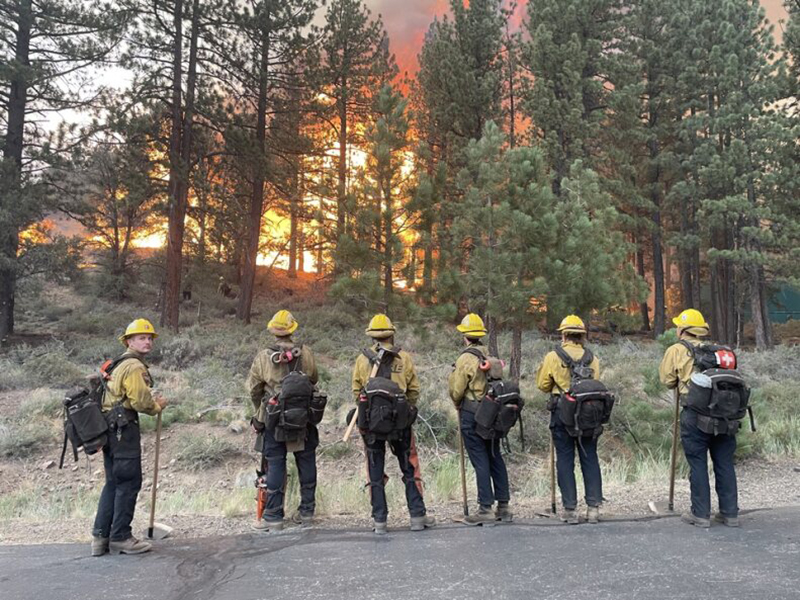
2. CAL FIRE Ponderosa Crew 1 members watch for spot fires during a firing operation. (Photo by Captain Tim Erskine.)
Hydration requirements are also high. On average, wildland firefighters need 4 to 6 liters of water a day to stay hydrated.1 Studies have shown that firefighters drink from 200 milliliters (1/5 of a water bottle) to more than 1 liter (one water bottle) per hour over a work shift.2 The CAL FIRE policy states a firefighter is required to carry 100 ounces of water as a minimum. Many hand crew firefighters will carry twice that amount.
Some agencies require a fitness test as part of annual qualification. The most common is the infamous “pack test,” a 45-minute, three-mile trek with a 45-pound pack. This is true only for positions that require the arduous pack test as part of their duty statement.
As physically demanding as the job of a wildland firefighter is, on incidents there is a required 2:1 work-rest cycle. Depending on the operational period set by the incident commander, the work-rest cycle is rigidly adhered to. The intent is to allow for rest and recovery from the shift. Shifts vary depending on the agency and the incident. Due to a variety of environmental conditions and rest locations, getting good rest can be a bit difficult. Sleep deprivation as well as the strenuous physical activity eventually will catch up. This has been noted as a critical factor in injuries and fatalities. In addition to adhering to the work-rest cycle, most agencies have a rotation for personnel to receive rest and recovery (R&R). Policies vary; however, most require some level of continuous R&R every 14 to 21 days.
As an entry level wildland firefighter, you need to explore what options are available as to what kind of wildland firefighting you will be doing. In general, you will work either on an engine company or a hand crew. Every agency has policies or career pathways to get into what might interest you. Some agencies require you to start off in one program before moving into the other program. For CAL FIRE, the new firefighter hand crew program is the easiest way to enter the fire service and wildland firefighting and requires minimal qualifications. Once successfully hired, the individual receives the mandated basic training and then qualifies to work on a Type 1 crew. Working on an engine company requires more prerequisite training. For CAL FIRE, the crew program is an excellent option as a start, and then you can move into the engine-based program and others if desired.
If you are already a career firefighter, your agency may provide some of these options. This may go beyond engines and hand crews and may include an air program, a helitack, or a variety of other wildland firefighting specialties. If you have not had exposure to these, follow your department process to “ride along” or talk to those in the program to see if it may interest you. Find out the career process and training required to enter or qualify for that program. In CAL FIRE, you’ll find a multitude of options in wildland firefighting and its specialties. If wildland firefighting interests you and you are motivated, you can spend an entire career working within these various specialties.
The world of wildland firefighting is constantly growing and developing. It is no longer a western United States challenge but ever growing and spreading. Agencies that have not historically experienced this discipline will find challenges in developing and growing a program. Other agencies that have traditionally fought wildland fires are constantly having to grow, improve, and develop their programs. This will be an ongoing phenomenon in the fire service. As always, reach out, develop relationships, and share the technologies and lessons learned in this arena to make the fire service a more prepared and advanced emergency service.
Endnotes
1. Ruby, Brent C.; Scholler, Dale A.; Sharkey, Brian J.; et al., “Water Turnover and Changes in Body Composition During Arduous Wildfire Suppression,” Medicine & Science in Sports & Exercise, 35(10): 1760-1765, 2003.
2. Cuddy, John S.; Ham, Julie A.; Harger, Stephanie G.; et al., “Effects of an Electrolyte Additive on Hydration and Drinking Behavior During Wildfire Suppression,” Wilderness and Environmental Medicine. 19(3): 172-180, 2008.
Mark Brunton is a 37-year veteran of the fire service. He is a battalion chief with CAL FIRE, assigned to the Ponderosa (CA) Fire Crew Center in the Amador-El Dorado Unit. He is experienced in all risk operations beyond wildland firefighting. He has been a Type 1 Operations section chief on CAL FIRE incident management teams for 25 years. He is also a graduate of the National Fire Academy Executive Fire Officer Program and is on numerous curriculum development and instructional cadres for CAL FIRE.
